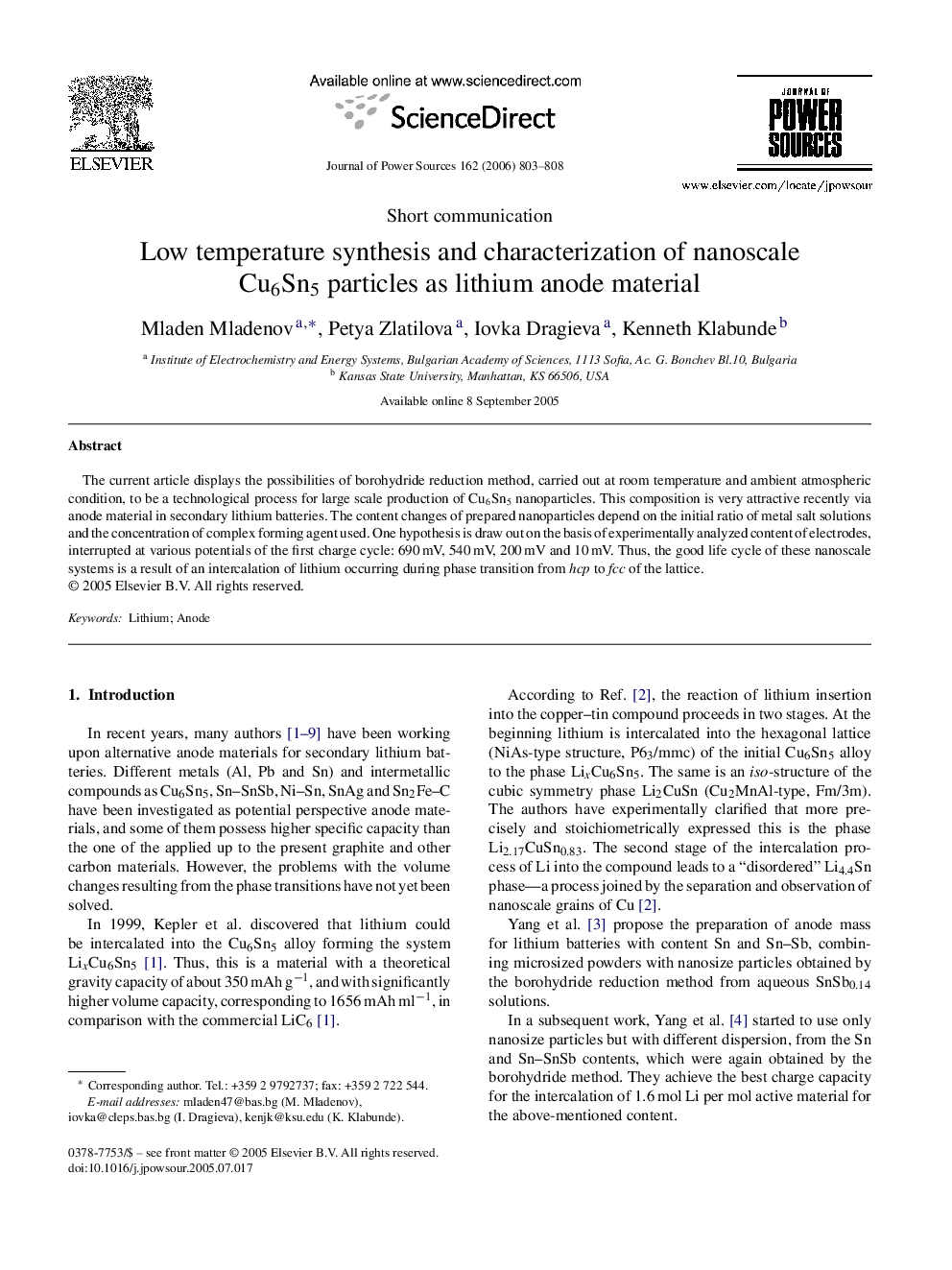| Article ID | Journal | Published Year | Pages | File Type |
|---|---|---|---|---|
| 1292438 | Journal of Power Sources | 2006 | 6 Pages |
The current article displays the possibilities of borohydride reduction method, carried out at room temperature and ambient atmospheric condition, to be a technological process for large scale production of Cu6Sn5 nanoparticles. This composition is very attractive recently via anode material in secondary lithium batteries. The content changes of prepared nanoparticles depend on the initial ratio of metal salt solutions and the concentration of complex forming agent used. One hypothesis is draw out on the basis of experimentally analyzed content of electrodes, interrupted at various potentials of the first charge cycle: 690 mV, 540 mV, 200 mV and 10 mV. Thus, the good life cycle of these nanoscale systems is a result of an intercalation of lithium occurring during phase transition from hcp to fcc of the lattice.
